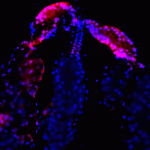Link to Pubmed [PMID] – 35526823
Link to DOI – S1567-1348(22)00093-410.1016/j.meegid.2022.105296
Infect Genet Evol 2022 08; 102(): 105296
Dengue is the fastest emerging arboviral disease in the world, imposing a substantial health and economic burden in the tropics and subtropics. The mosquito, Aedes aegypti, is the primary vector of dengue in the Philippines. We examined the genetic structure of Ae. aegypti populations collected from the Philippine major islands (Luzon, Visayas and Mindanao), each with highland (Baguio city, Cebu city mountains and Maramag, Bukidnon, respectively) and lowland sites (Quezon city; Liloan, Cebu and Cagayan de Oro [CDO] city, respectively) during the wet (2017-2018 and 2018-2019) and dry seasons (2018 and 2019). Mosquitoes (n = 1800) were reared from field-collected eggs and immatures, and were analyzed using 12 microsatellite loci. Generalized linear model analyses revealed yearly variations between highlands and lowlands in the major islands as supported by Bayesian clustering analyses on: 1) stronger selection (inbreeding coefficient, FIS = 0.52) in 2017-2018 than in 2018-2019 (FIS = 0.32) as influenced by rainfall, 2) the number of non-neutral loci indicating selection, and 3) differences of effective population size although at p = 0.05. Across sites except Baguio and CDO cities: 1) FIS varied seasonally as influenced by relative humidity (RH), and 2) the number of non-neutral loci varied as influenced by RH and rainfall indicating selection. Human-mediated activities and not isolation by distance influenced genetic differentiations of mosquito populations within (FST = 0.04) the major islands and across sites (global FST = 0.16). Gene flow (Nm) and potential first generation migrants among populations were observed between lowlands and highlands within and across major islands. Our results suggest that dengue control strategies in the epidemic wet season are to be changed into whole year-round approach, and water pipelines are to be installed in rural mountains to prevent the potential breeding sites of mosquitoes.



